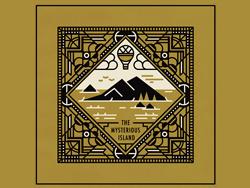Burundian Coffee with strong aromatic Flavor and Taste. Introduction to the characteristics of boutique coffee beans in the manor area.
Formerly known as Urundi, Burundi formed a feudal kingdom in the 16th century. Since the middle of the 19th century, the forces of Britain, Germany and Belgium invaded. The long-ruled monarchy, which was conquered by Germany in 1890, listed it as the territory of German East Africa and fell under the control of the Belgian army in 1916. After World War I, the League of Nations assigned the then merged Ruanda-Urundi to Belgium, which supported the local royal family to rule the region indirectly. Until the end of the second World War, Rwanda-Oolong became part of the United Nations trust territory, entrusted to Belgium, separated from Rwanda in 1959 and formally became independent as the Kingdom of Burundi on 1 July 1962. Burundi had briefly regained its monarchy at the time of its independence, but in 1966 the prime minister with a military background deposed the original prince (not long after he usurped the throne) and established the Republic of Burundi. Burundi began to enter the period of military dictatorship, most of which is made up of the plateau on the eastern side of the East African Rift Valley, with an average elevation of 1600 meters above sea level, known as the "mountain country". According to the topography, Burundi can be divided into three regions: the western plain, along the Ruzizi River, the Rift Albrtine plain, at 774 to 1000 m above sea level; the central and western mountains, with an average elevation of 1700 m, with the highest peak at Heha in the south-east of Bujumbura, 2670 m above sea level; and the east-central plateau, 1000 to 2000 m above sea level.
Hydrology
Lake Tanganyika is located on the southwest coast of Burundi, covering an area of 32900 square kilometers, with an average water depth of 700m and a maximum depth of 1455 meters. it is the second largest deepwater lake in the world after Lake Baikal in Russia.
Climate
Burundi has a subtropical and tropical climate. The lowlands of Lake Tanganyika, the western river valleys and the eastern part have a savanna climate, while the central and western regions have a tropical mountain climate. [3]
Resources
Burundi mineral deposits are mainly nickel, peat, cerium, tantalum, tin and so on. The nickel deposit is about 300 million tons and the taste is 1.5%. Peat reserves are about 500 million tons. Phosphate reserves 30.5 million tons, taste 11.1-12.6%. The limestone reserves are 2 million tons. Gold deposits are widely distributed, with large reserves in the northwest, and most of them were smuggled abroad in the 1930s. In 1993, forest coverage was 5% of the land area, but it was rapidly reduced to 3% due to fire and deforestation.
Burundi coffee was introduced by Belgian colonists in 1930. Unfortunately, many of these farms are on the border with war-torn Rwanda, putting pressure on coffee production.
Coffee producing areas in Burundi:
Coffee in Burundi is now grown only on small farms. Almost all coffee produced in Burundi is Arabian coffee beans, while coffee trees in Ngozi are planted at an altitude of more than 1200 meters.
Features of Burundian coffee:
Burundi has the most diverse and successful coffee industry in the world, and has its own characteristics. Burundian coffee is fragrant and has excellent acidity.
Flavor: mellow taste, rich aroma, excellent acidity
Suggested baking method: medium to deep baking
★★: good
Burundian coffee market:
Most of Burundi's coffee products are exported to the United States, Germany, Finland and Japan's Londi Coffee, which bears striking similarities with neighboring Rwanda, where coffee is often confused. Burundian coffee is mainly grown in bourbon, with traditional wet processing of coffee cherries. Its boutique coffee is characterized by elegant sweetness and bright citrus aromas.
Burundi is a small landlocked country located at the junction of eastern and central Africa, across the Nile and Congo basins, dominated by hills and mountains, with excellent coffee-growing elevations. The history of coffee cultivation in Burundi is not long, its coffee planting industry is carried out entirely in the form of small family farms, there is a great difference in quality, and years of war and social unrest have made its coffee planting industry very chaotic. But I have to admit that it has the potential to produce high-quality coffee.
Buyendi AA,FWS Burundi (Burundi) has the most diverse and successful coffee industry in the world and has its own characteristics. Coffee in this country was introduced by Belgian colonists in 1930 and is now grown only on small farms. Unfortunately, many of these farms are on the border with war-torn Rwanda, putting pressure on coffee production. Almost all coffee produced in Burundi is Arabian coffee beans, while coffee trees in Ngozi are planted at an altitude of more than 1200 meters. Burundian coffee has a rich aroma and excellent acidity, and most of its products are exported to the United States, Germany, Finland and Japan.

Important Notice :
前街咖啡 FrontStreet Coffee has moved to new addredd:
FrontStreet Coffee Address: 315,Donghua East Road,GuangZhou
Tel:020 38364473
- Prev

Introduction to the characteristics of fine coffee in the producing area of Ugandan coffee flavor
Java, which belongs to Indonesia, is the fourth largest island in the country, and the capital Jakarta is located on the northwest coast of Java. In addition, java is the name of a computer language, and because Java is rich in the famous Java coffee, the computer language takes Java as its name and the steaming Java coffee as its icon. Java coffee
- Next

Introduction of Pure and aromatic Puerto Rican Coffee Flavor Variety
In 1898, the Spanish-American War broke out and Spain was defeated. According to the Treaty of Paris, Puerto Rico was ceded to the United States. The administrative jurisdiction of the United States over Puerto Rico first took the form of a military junta. During its two years of governance of the island, the junta established schools, roads, railways, hospitals and health facilities. In 1900, the United States Congress established civilian control over the island. The Governor, the Cabinet and
Related
- Detailed explanation of Jadeite planting Land in Panamanian Jadeite Manor introduction to the grading system of Jadeite competitive bidding, Red bid, Green bid and Rose Summer
- Story of Coffee planting in Brenka region of Costa Rica Stonehenge Manor anaerobic heavy honey treatment of flavor mouth
- What's on the barrel of Blue Mountain Coffee beans?
- Can American coffee also pull flowers? How to use hot American style to pull out a good-looking pattern?
- Can you make a cold extract with coffee beans? What is the right proportion for cold-extracted coffee formula?
- Indonesian PWN Gold Mandrine Coffee Origin Features Flavor How to Chong? Mandolin coffee is American.
- A brief introduction to the flavor characteristics of Brazilian yellow bourbon coffee beans
- What is the effect of different water quality on the flavor of cold-extracted coffee? What kind of water is best for brewing coffee?
- Why do you think of Rose Summer whenever you mention Panamanian coffee?
- Introduction to the characteristics of authentic blue mountain coffee bean producing areas? What is the CIB Coffee Authority in Jamaica?

